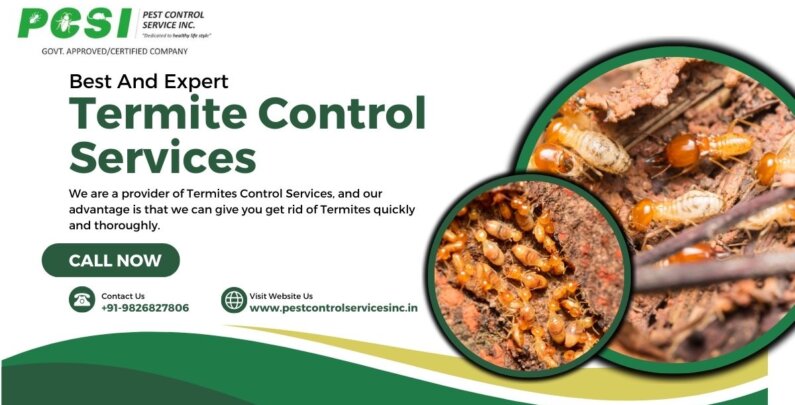Protecting Your Home from Termites: Termite Control
As the monsoon season arrives, it brings relief from scorching heat and revitalizes nature. However, it also ushers in an increased risk of termite infestations, posing a significant threat to our homes. Termites thrive in damp conditions, making the rainy season their prime time for reproduction and foraging. To safeguard your property from these destructive pests, it’s crucial to take preventive measures and implement effective Termite Control strategies. In this blog post, we will discuss the importance of Termite Control during the monsoon season and provide valuable tips to protect your home from termite damage.
Understanding Termite Behavior
Before delving into Termite Control methods, it’s essential to understand the behavior of termites. Termites are social insects that live in colonies and feed on cellulose-rich materials, such as wood and paper. They can cause extensive damage to the structure of a building if left unchecked. Subterranean termites, the most common type, build mud tubes to access above-ground food sources, while dry wood termites infest dry wood without the need for soil contact. Both types can thrive during the monsoon season due to increased moisture levels.
Signs of Termite Infestation
Detecting termite infestations early is crucial for effective control. Look out for these signs that may indicate a termite problem:-
- Hollow-sounding wood:- Tap wooden surfaces and listen for a hollow sound, as termites consume wood from the inside out.
- Mud tubes:- Check for mud tubes on walls, wooden beams, or other structures. These tubes provide termites with protection and moisture while they forage for food.
- Discarded wings:- Swarmers, reproductive termites, shed their wings after mating. Finding discarded wings near windowsills or light sources suggests an active termite colony nearby.
- Frass:- Termite droppings, known as frass, resemble tiny wood-colored pellets and can indicate an infestation.
Termite Control Strategies
To protect your home from termite damage during the monsoon season, consider implementing the following Termite Control strategies:-
- Ensure proper drainage:- Poor drainage can lead to water accumulation around your home’s foundation, attracting termites. Clean gutters regularly, fix leaky pipes and ensure water flows away from the structure.
- Repair cracks and openings:- Seal any cracks or gaps in the foundation, walls, and roof, as termites can exploit these entry points. Pay close attention to areas where utility pipes enter the building.
- Remove wood-to-soil contact:- Avoid direct contact between soil and wooden structures, such as decks, fences, and crawl spaces. Use concrete or metal pedestals to elevate these structures.
- Store firewood properly:- Keep firewood stacks away from your home, elevated from the ground, and covered to prevent termites from accessing them.
- Trim vegetation:- Overgrown vegetation can create a bridge for termites to reach your home. Maintain a gap between plants and your house, and trim branches that touch the structure.
- Regular inspections:- Schedule professional Termite Control during the monsoon season to detect early signs of infestation. Experts can identify vulnerable areas and provide appropriate treatment recommendations.
- Termite baiting systems:- Consider installing termite baiting systems around your property. These systems use termite-attracting bait stations that deliver a slow-acting toxin to the colony, effectively controlling termite populations.
- Chemical treatments: Consult with a professional Pest Control Service to apply termiticides.

